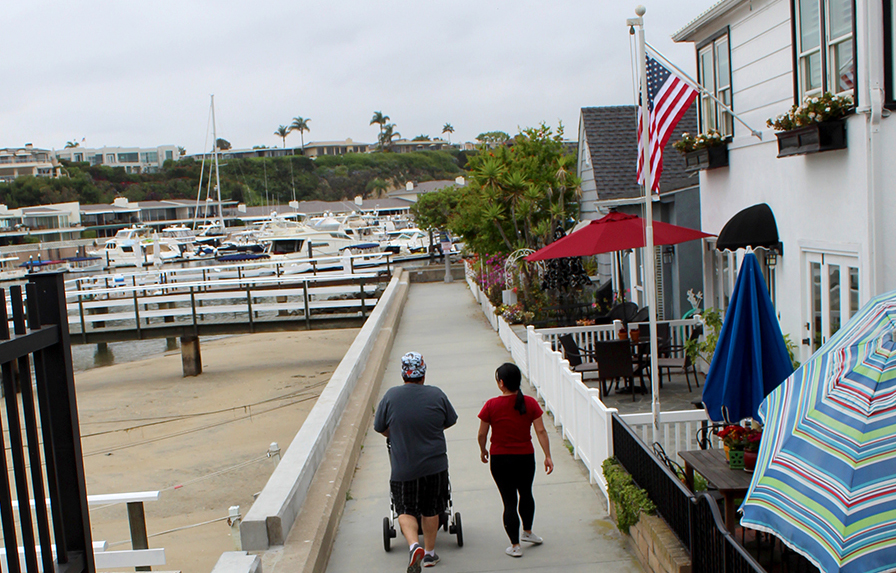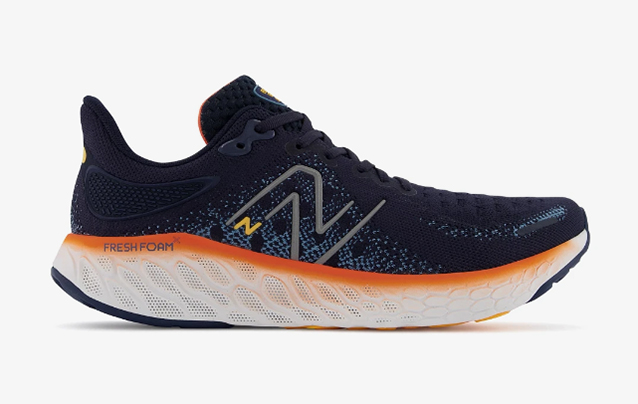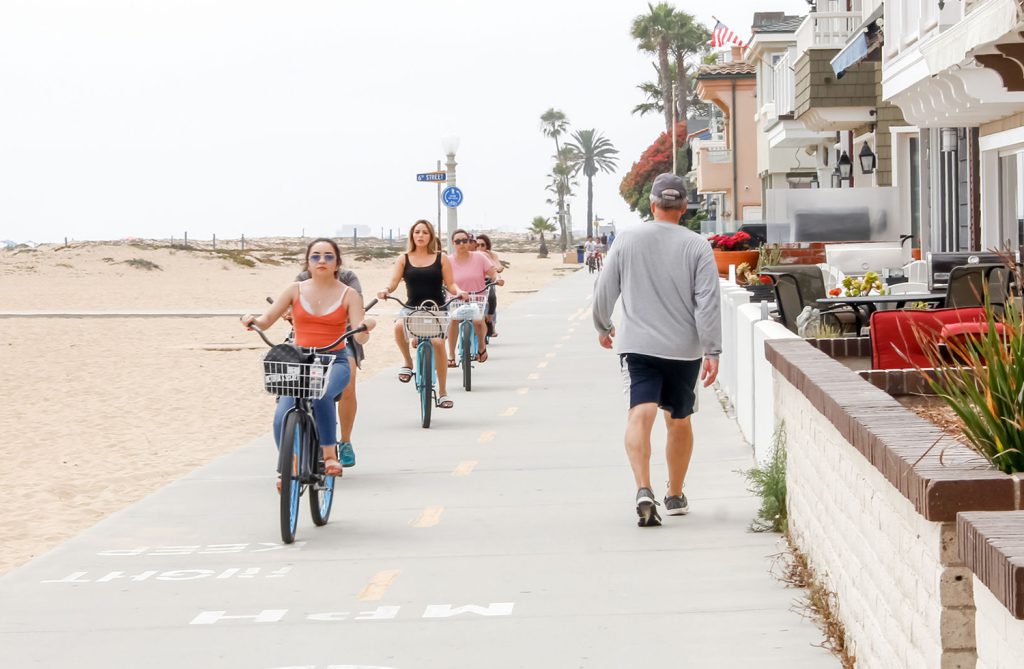
Remember when you used to pester your little sibling to play, and they yelled “Go take a walk!”
You may not have thought so then, but that might have been one of the best pieces of advice you ever received.
Anthropologists have concluded that little ape-like human ancestors named “Ardipithecus Radicus” ambled clumsily on two legs about 4.4 million years ago. Their minuscule brains probably had no verbal concept that they were walking, although they may have “known” that their feet hurt after hours of scouring the bush for food.
As bipedal creatures evolved, they all probably got tired of foot blisters, stubbed and broken toes, insect and/or snake bites, cracked and bleeding skin and callouses. So 40,000 years ago, homo sapiens invented shoes, which markedly aided their wanderings, meanderings and migrations.
The invention of the wheel some 5,000 years ago slowly diminished the need for walking. Now, walking too often consists of ambling from the restaurant to the car, or casually strolling down the supermarket aisles.
But don’t worry, walking increased in popularity in 1990 due to government recommendations for increased physical activity at moderate intensity. According to a recent U.S. Bureau of Labor Statistics survey, 30 percent of people who engaged in sports chose walking as their preferred activity, followed by weightlifting at 13 percent.
Researcher Dr. Shane O’Mara of Trinity College in Dublin, Ireland, highlighted the benefits of walking in his 2020 book, “In Praise of Walking: A New Scientific Exploration.”
As the early walkers discovered, walking frees up one’s hands. Walking increases the strength of signals in the brain concerned with all the senses. It increases creativity; it improves wear and tear on muscles and connective tissues, and encourages brain cell growth. Plus, walking gets us away from the dinner table or television and into the outer physical world.
Ten thousand is the most quoted number of walking steps one should take daily. Three thousand to 4,000 steps a day equates up to two miles, depending on stride. Then, of course, briskness of pace can be factored into one’s conditioning equation. The U.S. Department of Health recommends 150 minutes per week of exercise. That could include walking up stairs in one’s home, chasing the little ones on the playground, or walking the dog — which is also great for the pooch.
The Mayo Clinic cites the benefits of regular walking: reduced risks of heart disease, obesity, diabetes, high blood pressure and depression.

A Salute to Shoes
Today, shoes have become our protective callouses. Their designs, engineering, materials and manufacture together have enhanced the walking experience, while leading to better foot health.
To get a leg up on the type of shoe to buy, there are a few differences to know between walking and running. When a runner’s foot hits the ground, it usually absorbs up to three times the body’s weight, while a walker’s impact is but one and one-half the body weight. Walkers also distribute weight more evenly to feet and legs.
Because runners exert more energy, their feet tend to get hotter and more sweaty, which has led shoe designers to incorporate more breathable mesh into their products, leading to lighter shoes. Walking shoes, though heavier, provide more stability — although both running and walking shoes offer varying degrees of both.
The American Academy of Podiatric Sports Medicine highlights the difference between walking and running shoes:
- Soles: Walking shoes have more flex and bend than do running shoes.
- Heels: Running shoes have thick heel wedges, while a thick heel on walking shoes may cause tendinitis or shin splints.
- Motion control: Running shoes offer more motion control to keep the foot neutral, while walking shoes (generally) offer less stability.
- Weight: Running shoes are generally lighter in weight for faster speeds; whereas, walking shoes (as differentiated from hiking boots) are always heavier — although not heavy.
If there were one benefit to the global Covid pandemic, it is that this virus encouraged people to head outdoors to walk. According to Tony Disarufino, retail marketing manager for the 40-year-old, 46-store Road Runner Sports shoe chain (with one store at Triangle Square, Costa Mesa), “We have seen a definite uptick in the sale of walking shoes coming out of the pandemic.” Walking-specific shoes now account for 40 percent of sales, he shared.
“Well, howz it feel?” is no longer the only standard criteria for walking (or running) shoe selection? At Road Runner, customers are encouraged to have their feet digitally scanned, which renders a 3-D image of the foot structure. From there, a “fit expert” will make three- or four brand recommendations for the customer to try based on the image. Sales staff encourage walkers to step aboard a treadmill to test the shoes. Runners can be seen testing brands around the indoor track space. Most everyone strides out with a shoebox under their arms.

Podiatry Point of View
Whereas Road Runner Sports is in business to sell shoes, Fashion Island-based podiatrist D. Jeffrey Haupt states that he’s “in business to keep people out of my office.” Haupt observed that first and foremost, walking or running in properly supportive shoes is mandatory. In choosing the proper shoe, “comfort comes first. If a salesperson tells you that they’ll take about a week to break in, walk (or run) out of that store.” Additionally, says Haupt, regular foot and leg stretching contributes not only to foot and leg strength, “but all the way through the spine and lower back,” as well — so important for overall stability and balance as one ages.
Most shoes today are well-manufactured, Haupt assesses. Where they may fall short is in the insole. A prescribed, custom molded insole is “the gold standard” of foot support, Haupt said, but Road Runner “offers a molded insole that is really good,” he added. Short of custom molded insoles, a “beefier, over-the-counter arch support” is his third choice.
Today’s walking and running shoes are good for “about 500 miles or six-months of age, after which the shoes’ materials begin to break down,” Haupt apprised. If one were to walk 30 minutes a day at 4 m.p.h., after six months, there’d theoretically be 135 miles left on a pair of walking shoes — enough to saunter from Newport Beach to Santa Barbara.
Recognizing the popularity of the sport, Newport Beach has posted online a walking trail map for the city at https://www.newportbeachca.gov/government/departments/recreation-senior-services/bike-walking-trails.
The 13 walks range from Pier to Pier (1.74 miles) and the Balboa Island Loop (1.7 miles) to the Back Bay Trail (2.9 miles, one way), the Upper Bay Trail (2.89 miles, one way), and the Buck Gully Trail (3.41miles).
Walking may be the ideal exercise for everyone, no matter one’s age. Perhaps best of all: No directions for use or assembly required, no reservations needed, and no monthly membership fees.




